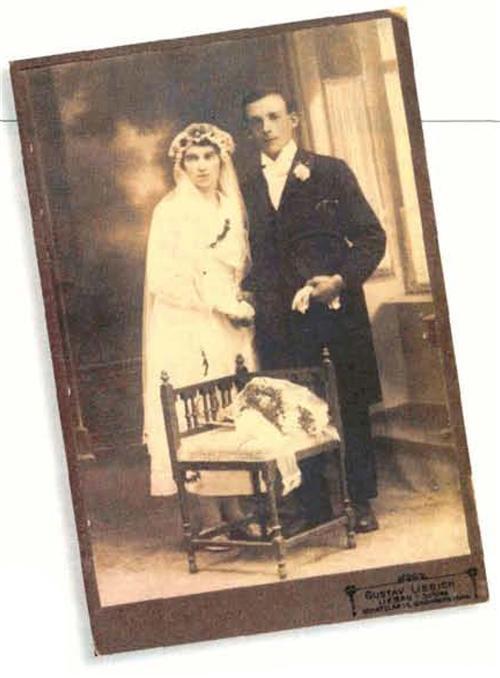Sign up for the Family Tree Newsletter Plus, you’ll receive our 10 Essential Genealogy Research Forms PDF as a special thank you!
Get Your Free Genealogy Forms
"*" indicates required fields
There’s no mistaking a wedding picture, right? Wrong. Some families have these portraits in their collections and don’t even know it. Firmly fixed in our minds is the image of a bride in white and a groom in a nice suit. In reality; our ancestors chose many variations of wedding wear; the white dress was just one option.
Of course, the attire in some images, such as Liz Weiers’ (pictured here), gives the occasion away. But naming the blissful couple often requires some detective work. If you suspect a family portrait depicts your forebears’ nuptials, follow these steps to identify the image from this day forward.
Affairs to remember
Photography dates from 1839, but few couples had wedding pictures taken before the late 1860s. Then, only the bride and groom posed in their wedding attire, and they ordered multiple prints to give to family and friends as mementos.
In the 1880s, wedding albums became popular, and photographers began to include members of the wedding party in the pictures. When dating a more recent wedding photo, don’t focus on just the couple; the wedding party can provide clues, too. Many Victorian albums also depict lavish displays of gifts. By closely examining these items, you might discover artifacts still in the family.
Grandma’s gown
Costume clues almost always help to date puzzling pictures. In Weiers’ photo, the bride wears a traditional white dress, and the groom sports a frock coat. For help dating your ancestors’ attire, consult Wedding Fashions, 1862-1912: 380 Costume Designs from “La Mode Illustrée” edited by JoAnne Olian (Dover) and Dressed for the Photographer: Ordinary Americans & Fashion, 1840-1900 by Joan Severa (Kent State University Press). You also can find photos of well-dressed wedding parties in American women’s magazines, such as Godey’s Lady’s Book (1830 to 1898) and Brides magazine (1933 to present).
Wedding dresses usually mimicked the styles of everyday dresses. For instance, in the 1890s, they often featured large leg-o-mutton sleeves, as seen in 20th Century Fashion by John Peacock (Thames and Hudson). I used this book to date Weiers’ picture to around 1925, based on the shape of the woman’s veil and the design of her dress.
But keep in mind that women often wore their mother’s or grandmother’s gown, so the style of the dress doesn’t necessarily reflect the date of the picture. I saw one old photo in which the groom’s attire dated from the 1930s, while the bride’s dress dated from the late 1800s. (She updated her look with a new veil.) Always examine each piece of a bride’s outfit to make sure that the dress and the accessories are from the same era.
Ceremonial signatures
A photographer’s imprint (the name and address of a photographer stamped on an image) can help verify a date and lead you to other clues. Find out when the photographer was in business by checking city directories, contacting historical societies or consulting regional directories of photographers.
With this ring…
Don’t overlook the obvious — if you still don’t know if your photo’s a wedding picture, examine the couple’s hands for wedding rings. Veils, flowers and bows adorning even the plainest attire also could signify a wedding portrait. For example, orange blossoms, Queen Victoria’s flower of choice when she married Prince Albert, remained an important wedding decoration for decades. Even men sometimes wore small sprigs of blossoms attached to their coats.
And don’t forget to examine the couple’s pose. Photographers usually posed the bride and groom close together, holding hands, to signify a marital union.
All in the family history
Now, it’s time to examine your family tree for marriage data. Weiers thinks the man in this portrait could be her grandfather Josef Exner’s brother, who was horn in northern Bohemia. When her grandfather immigrated to Canada in 1939, he left several siblings behind, Weiers is in the process of tracing her family’s German roots, and now that she knows when the picture was taken, she’s trying to verify the couple’s names.
Your own family’s wedding pictures are visual proof of new branches growing on the family tree. Now that you know what to look for, take out your photographs and see how many branches you can find.
From the December 2003 issue of Family Tree Magazine.
ADVERTISEMENT





